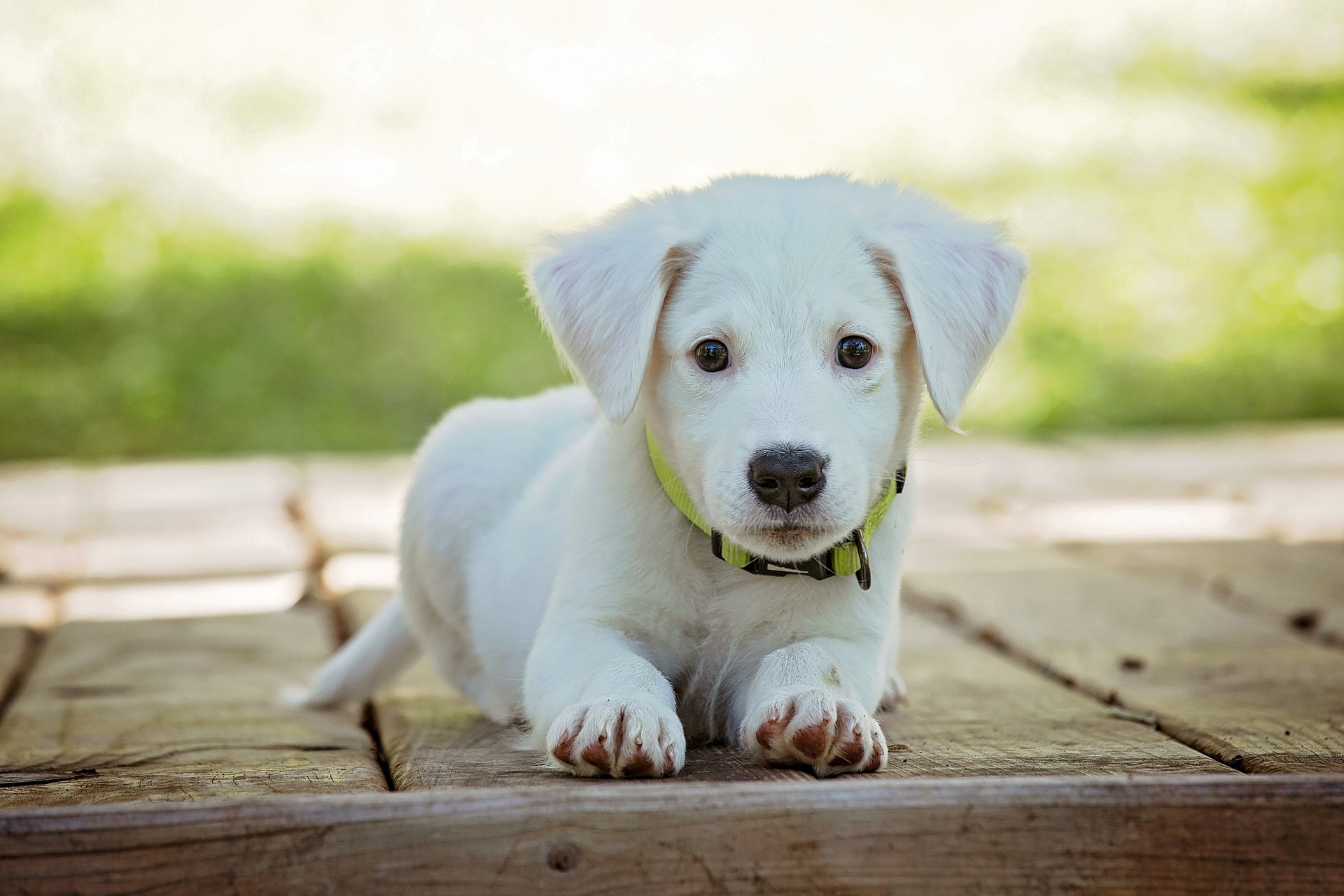People have justifiably likened having a puppy to having a newborn baby. They both seem to cry all night long, and they need constant attention and supervision – for their own safety as well as your sanity.
When it comes time to training your energetic, enthusiastic ball of fur, it can seem like an unsurmountable task. Like anything worth doing, it will take commitment, patience, and a dose of humor to get through. But successful puppy training results in a happy, well adjusted dog who understands he is loved and part of the family. If you have a new puppy and need advice on the best puppy training basics, we are here to help.

What are the Basics?
- Start from Birth: Puppies do best when they have been handled and socialized since birth. You can generally start formal training at approximately 7-8 weeks of age.
- Don’t Delay: Some “experts” delay any puppy training for 6 months., Unfortunately, by this juvenile stage, many puppies have already learned some behaviors which are harder to undo. As stated, you can begin basic puppy training and commands much earlier on.
- Include the Basics: Puppy training should include basic obedience commands, leash manners, good social skills with humans and dogs, along with environmental awareness and building confidence.
- Have Goals in Mind: Not only will you be training your pup to have a balanced state of mind through learning, but proper training will also result in a socially fulfilled puppy who is tired at the end of the day (thus learning to sleep through the night as you do.)
- Work with Their Demeanor: When working with a two-month old puppy, you should utilize methods which rely on gentle, positive reinforcement. Puppies have limited attention spans, so daily training sessions should be kept short so as not to tire them out or to create discouragement – in you or them!
What and How Puppies Learn
- Puppies are often taught to “sit,” “down,” and “stand” using a method called food-enticement training. Food treats are used to lure the puppy to follow its nose into the proper positions for “sit,” “down,” “stand,” and “stay”.
- Ideally you should give the command phrase just once, then use your food to entice the puppy into the correct position. Once the puppy has performed, offer profuse verbal praise and an affectionate pat or cuddle. These secondary reinforcers eventually become the reward in place of the food, as the dog associates them with the correct behavior.
- If the first command is not obeyed, you may be moving proceeding a little too quickly for your puppy. However, if you keep repeating the command, the puppy will learn that several repetitions are acceptable before he obeys. Keeping a leash attached can help to guide the puppy into immediate response if the puppy is not doing so on his own.
Are Puppy Training Classes a Good Idea?
You may decide to attend a formal class for the benefit of both you and your puppy. Training classes serve a few important functions in successful puppy training. Expert trainers can demonstrate techniques and help teach both human and puppy the most effective steps to utilize in training. If problems arise, trainers can assist with fixing in the moment, rather than an owner reacting with a wrong response which must later be “un-taught”.
Further, the puppy will be learning in a group situation, with some real life distractions – while owners can meet, learn from and interact with other puppy owners. If you live in the Sarasota or Bradenton area and think puppy training classes may be right for you, call Gulf Coast K9 Dog Training today.




